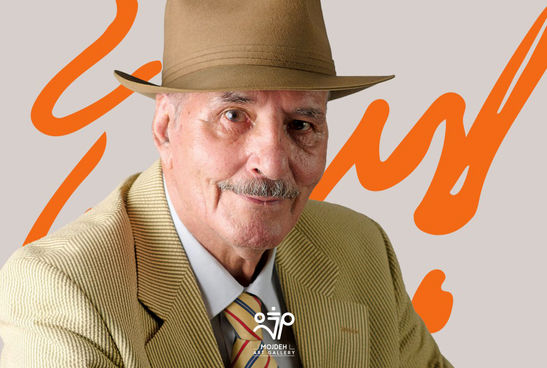The Impact of Art and Artists on Mitigating Psychological and Social Harms

Mojdeh Tabatabaei’s interview with Iran newspaper on “Eye to Eye” exhibition in Tehran Museum of Contemporary Arts
Although the public's and artists' keen interest in viewing the treasures of the Tehran Museum of Contemporary Art has led to millions of visits to the "Eye to Eye" exhibition, it is worth considering why, amidst social and economic challenges, news of this exhibition garnered so much attention on social media. Why did people, with all their concerns and problems, stand in long lines to see these artworks?
The issue that needs to be addressed here is the impact of art and artists in reducing stress and the damages caused by social crises. In other words, the role of art and artists in mitigating psychological harm during social crises can be very influential. By evoking people's emotions through art, it can foster a sense of helping and empathy, inviting them towards tranquility and patience.
In essence, art therapy represents suitable methods of utilizing symbols and artistic activities to generate positive emotions and enhance cognitive abilities in humans, fostering adaptability and coping with life's complexities. It also serves to keep hearts alive and intensify hope.

Mojdeh Tabatabaei, the director of Mojdeh Art Gallery, in an interview with Iran, discussed the impact of artistic events on reducing stress and cultivating hope and solidarity among people. She stated, 'When social conditions become challenging and psychological pressure increases within society, one of the trends that emerges is a tendency towards art. People seek a refuge for healing and tranquility, and in the realm of visual arts, museums are undoubtedly one of the best places to achieve this.’
Tabatabaei continued, 'Regardless of various psychological states, art can always be a remedy when the general mood of society is unfavorable. Visiting recreational places like restaurants and large stores is considered a temporary pastime, but visiting cultural and artistic venues such as museums can rejuvenate the broken spirit of individuals. I have previously witnessed a similar grand queue of people in front of museums in Italy during the overwhelming public reception of the 'Eye to Eye' exhibition. Now, seeing this enormous crowd of eager museum visitors in our own museum and in Laleh Park brings me indescribable joy.'
When asked about how some people reported feeling better after viewing the artworks, even if they didn't fully understand their meanings, Tabatabaei responded, 'This is rooted in human aesthetics, where people enjoy visual beauty regardless of their specialized knowledge of art styles, techniques, and history. This is true for everyone, and one doesn't need to have artistic knowledge to experience this thrill after seeing artworks.'
According to the director of Mojdeh Art Gallery, art and cultural officials did not anticipate such a tremendous response to the exhibition. This exhibition presented an opportunity to foster greater social cohesion, and the impacts of this artistic event, given the overwhelming turnout, will undoubtedly continue.
Tabatabaei concluded by saying, 'The outcome of this event demonstrates that well-curated exhibitions always have the potential for high attendance. Society is thirsty for quality artworks and such spaces. Art can always serve as a remedy for the unfavorable conditions of a community. Finally, I would like to express my gratitude to Mr. Jamal Arabzadeh, the curator of this exhibition, for making this event possible.'



